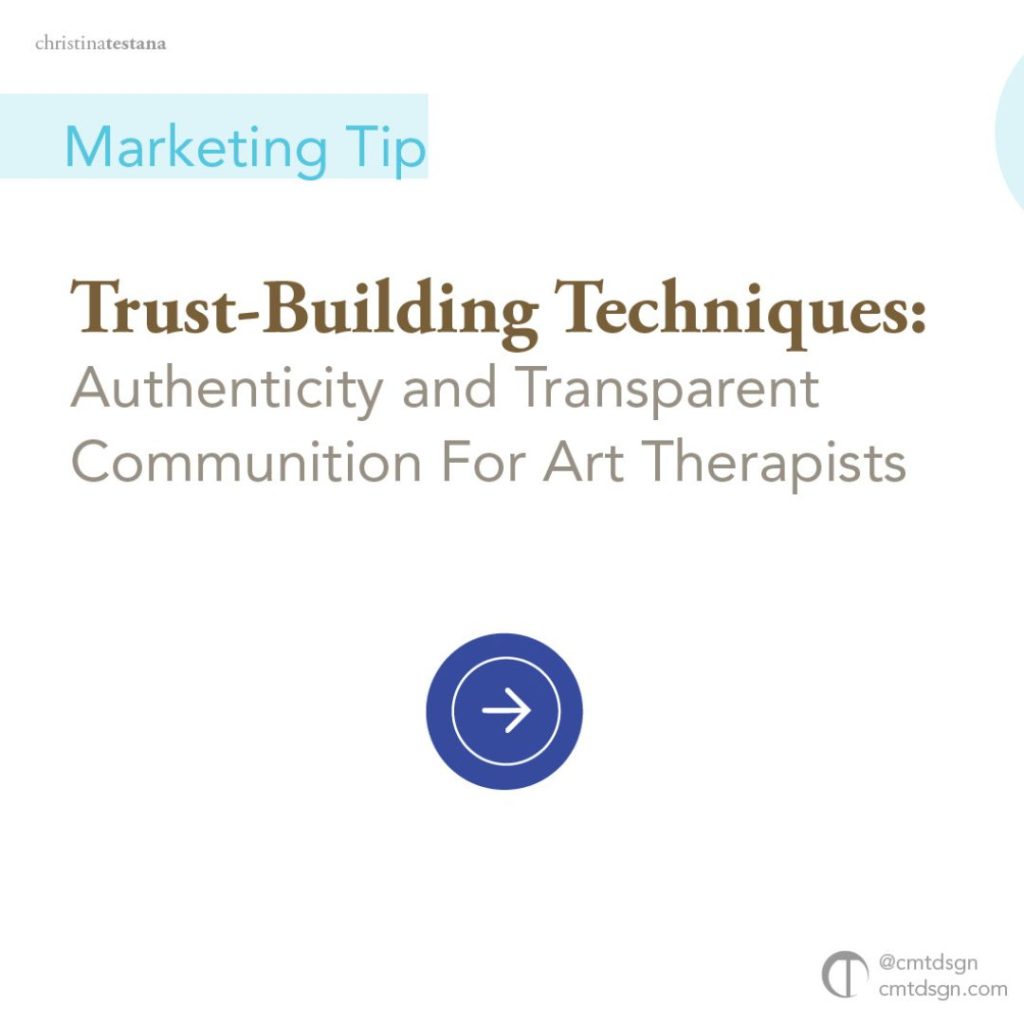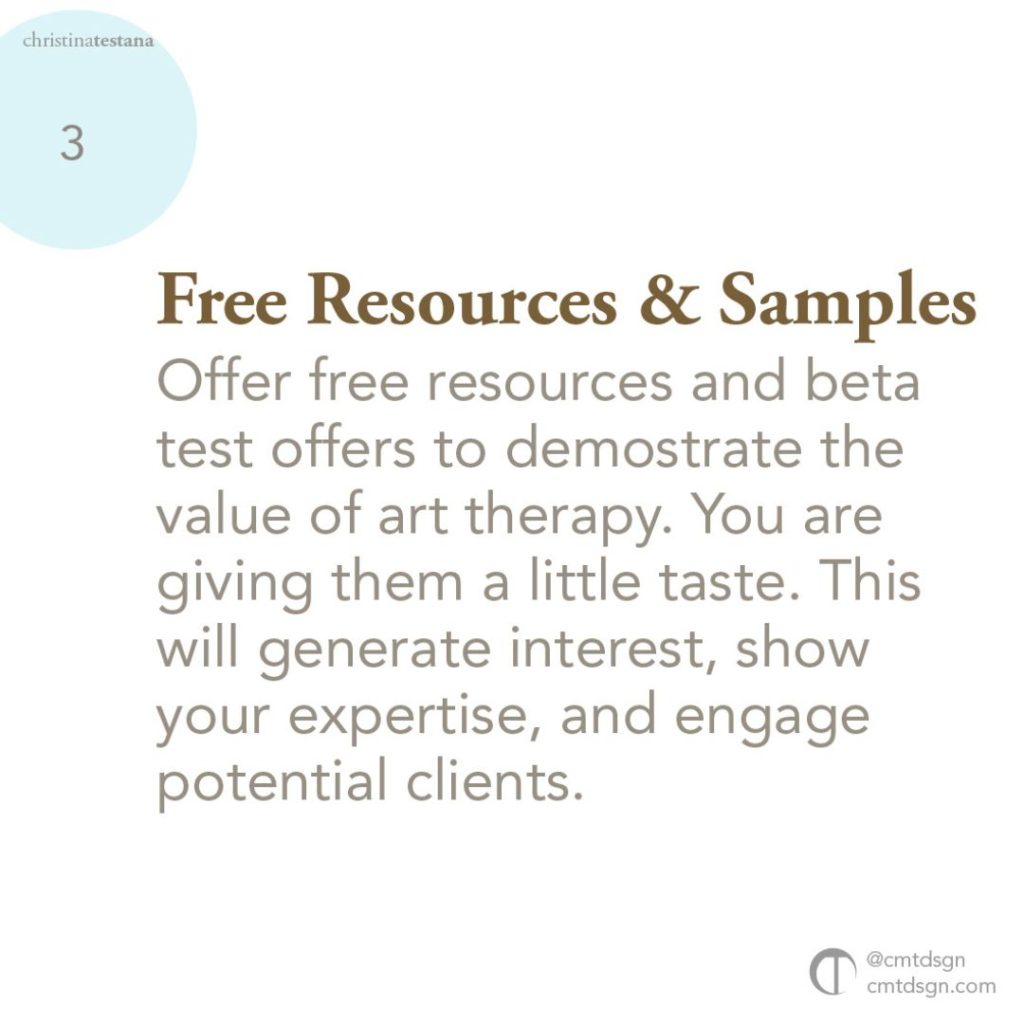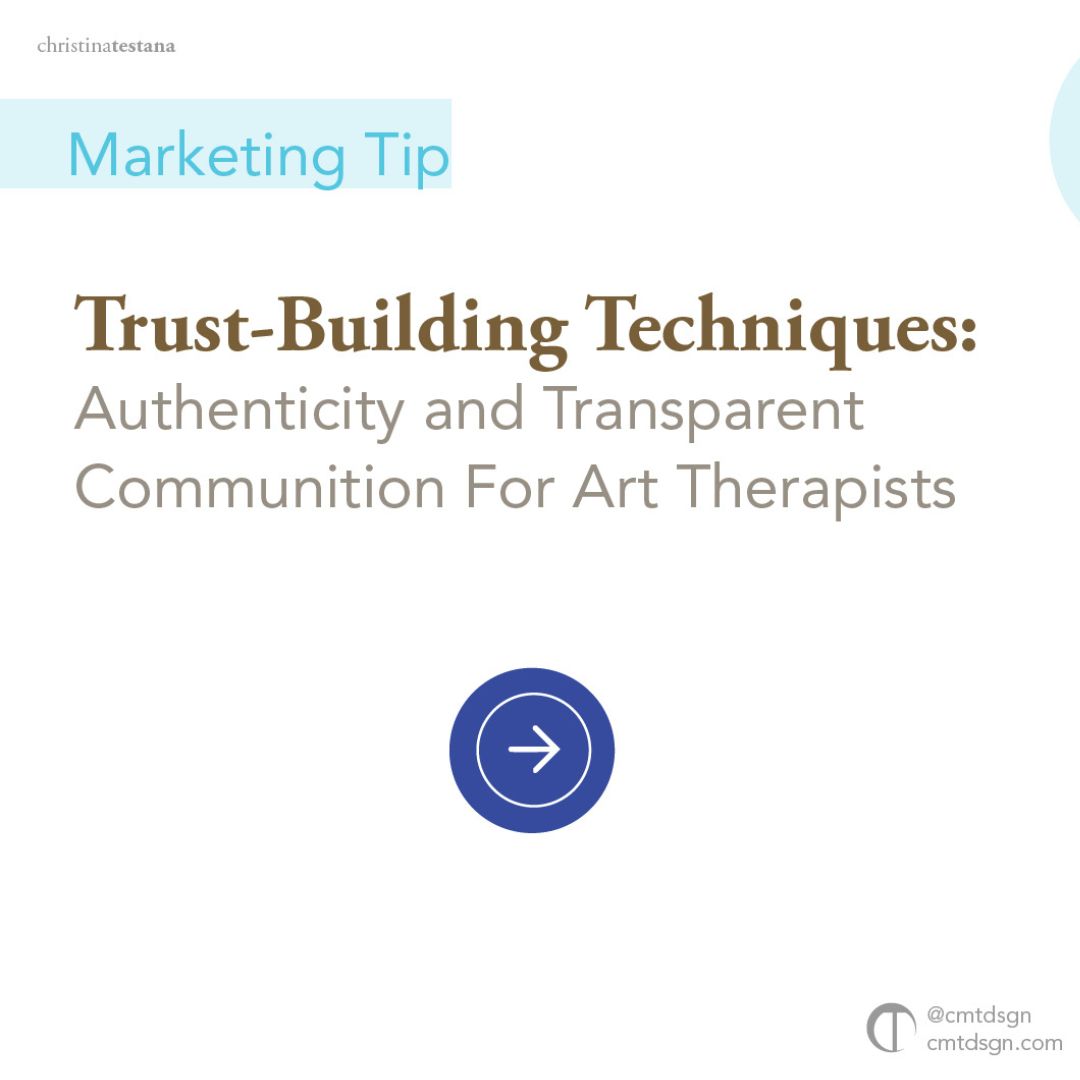Are potential clients fleeing when they hear about art and healing? Did you focus on building trust first?
The frustration is real. Let’s explore building trust, why this happens and how we can overcome it together.
Lack of building trust is the top reason for client fleeing due to perceived unattainability.
This is important for relationship development and create a genuine bond between you and the client.
Your goal: Build client trust to enhance receptiveness to art therapy offer.
Establish trust, ensuring clients believe in your expertise, comfortable approach, and knowing their best interests will be prioritized.
Create a genuine and transparent connection with clients while explaining the transformative power of authentic art therapy.
Explore trust-building techniques, the significance of transparency and authenticity in art therapy branding, and strategies for positive change.

Understanding Trust-Building Techniques
Establishing a secure and confidential relationship between you and your client is crucial for progress within art therapy.
Create a safe, reliable, and comfortable environment for clients to feel open, receptive, and explore during art therapy sessions.
In art therapy, trust plays a crucial role in facilitating personal growth and healing.
The same method in sessions is similar to building your art therapy brand to attract clients to try art therapy.
Here are a few Trust-building Techniques to try:

1. Result focused communication
Highlight art therapy benefits and the emotional experience it offers through your website, social media, content, and marketing materials.
Shift the focus to the client, their needs, and the value you bring, emphasizing your approach and methodology.
State how it can help them and less on the features and tools.
Keep things simple and to the point and focus on what your ideal client desires, and their aspirations. That outcome they want and what they expect from you.
Share your process in three simple steps even though it might but longer behind the scenes. Focus on making it easy for the client to navigate and understand at surface level communication.

2. Be the educator building trust
Produce value-based art therapy content. Must be a format that is easy for you to create and comfortable for clients to consume. Formats can be blog posts, videos, podcast, or social media.
The goal: Answer your ideal audience’s biggest questions about art therapy.
A certain problem their facing that you are the best at solving. Be helpful and resourceful by sharing knowledge with your ideal audience. Solve a minor problem or shift their mindset.
Your content needs to deliver value something that your ideal client can take with them. Your content should have 5 different categories that are focused understand a specific niche and problem.
Here’s an example:
Jodie is an art therapist who focuses on helping youth set boundaries in family dynamics through art therapy.
In Jodie’s content she would focus on these 5 categories when it comes to producing value-based content.
- Boundary tips
- Roleplay Scenarios
- Client Success stories
- Art Therapy Techniques
- Communication Strategies
These categories is what you would share to your ideal audience on a weekly basics.
You will see how much organic traffic will come to your Instagram page because you are sharing value.
This valuable information you are sharing will help potential clients understand the value of art therapy.
It will be over a period of time as you keep sharing.
When rolling out your campaign and selling an offer. The people who engaged with your content up to this point will feel more comfortable in trying it.
Why?
Through the content you create, you focus on solving doubts, fears or questions your people have.

3. Free Resources, Samples, Open house sessions, and beta test offers
Not many like to hear “do work for FREE or give away FREE stuff.”
I ensure you this tactic works! Think of this as an appetizer for your people, give them just a little taste.
If you are creating free resources and samples, you don’t have to give too much away. Just enough to solve a minor problem or shift their mindset.
Ask your audience questions about something related to what you do and what you solve. The answer you receive can be the compass for creating a freebie for your people.
Show them value and how you can help. The goal here is to get them on your mailing list and keep them engaged.
If its a open session or beta test offer, do it strategically meaning not all the time its exclusive and many done once a year.
It’s your choice if you want to make it free or at a low cost so that you don’t dilute your art therapy services!
This period is not about making money its about collecting testimonials and feedback from your ideal client so that you can improve your business.
The reasons for creating free opportunities:
Demonstrates Value
By offering free resources, samples, open sessions or beta test offers, you demonstrate the value of your art therapy services. It allows potential clients to experience a small portion of what you have to offer, giving them a taste of the benefits of art therapy.
It showcases your expertise and helps potential clients understand the value they can gain from working with you. This illustrates to the potential client what’s in it for them.
Builds Trust and Credibility
Providing free resources, samples, open sessions or beta test offers builds trust with your audience. It shows that you are genuinely interested in helping and supporting them.
When people see that you are willing to share your knowledge and expertise without asking for anything in return, they are more likely to trust you and view you as a credible source in the field of art therapy.
Widens Reach and Visibility
Offering free resources, samples, open sessions or beta test offers increases your visibility and reach. People are more likely to share free resources and samples with others, which can help spread awareness about your art therapy brand.
It can also attract individuals who may not have considered art therapy before but are willing to try it out based on the free resources and samples you provide.
Generates Interest and Engagement
Free resources, samples, open sessions or beta test offers can pique the interest of potential clients who may be curious about art therapy but are hesitant to commit to a full session or program.
It gives them an opportunity to explore the benefits and possibilities of art therapy at their own pace. This engagement can lead to further interactions, inquiries, or even conversions into paying clients.
Establishes Expertise and Differentiation
By offering valuable free resources, samples, open sessions or beta test offers, you showcase your expertise and differentiate yourself from competitors. It positions you as a thought leader and a reliable source of information in the field of art therapy.
When potential clients see that you are providing high-quality resources for free, they are more likely to trust your expertise and consider your services over others.
Some examples of free resources you can craft for your ideal client can be:
- Art Therapy Activity Worksheets
- Guided Visualization or Meditation Recordings
- E-Books or Guides
- Video Tutorials
- Art Therapy Resource Book List
- Creative Prompts or Challenges
- Art Therapy Informational Videos
4. Client Testimonials and Case Studies
Use user generated content to your highest potential because potential clients would be more inclined to hear from past clients. They would have the best insights on how art therapy impacted them and hear their specific experience and stories about it.
These stories are very personal to past clients which bring richness in communizing how it went for them, spilling out raw feelings, illustrating vivid pictures to using their own language to describe what art therapy look like to them.
This is juicy information for any potential curious clients and it would be ideal to feature these transformational stories all throughout your touch points with the client.
Touch points could be my website (blurb on homepage, blurb on service page, and blurb on review page.)
These transformational client stories highlight how art therapy has positively impacted individuals and their specific experiences. These personal stories create social proof and inspire trust in your art therapy services.
5. Collaborations and Partnerships
Another great tactic is collaboration, this can be with other professionals or organizations who share the same ideal audience as you, plus should align with your values.
This way you both create something amazing together that brings value from both perspectives into the collective. Some great ideas for collaborations can be webinars, workshops, offer bundles, or a collaborative offer.
This could include partnering with mental health practitioners, wellness centers, or community organizations. By working together, you can build credibility and reach a wider audience. This is called cross-sharing audiences to reach more people and create community.
6. Personal Branding and Transparency in Art Therapy Branding:
Being transparent means being open, honest, and forthcoming in your actions, communication, and decision-making. It involves a willingness to share information, disclose intentions, and operate with integrity.
Transparency is an essential aspect of building trust, nurturing effective relationships, and promoting accountability.
You know as proactive therapists that openness and honesty are the key components in therapeutic relationships.
Plus setting boundaries around who you help through the power of brand positioning. It gives you the advantage of living in your authentic self.
Allowing you to embrace your personal strengths as an art therapist and lead with your unique approach.
Branding is extremely important when it comes to expressing yourself and telling your story. You should strategically share your personal story and passion for helping your ideal client with art therapy.
Sharing the personal stories that link to what problem you solve is essential to building trust.
Illustrating through the use of story how you can help them and what results and feelings you bring to people.
Most art therapists are very reserved about their personal life but you don’t need to give too much away. You don’t need to overshare, pick a story from past experiences that share why you are here.
The story must relate to art therapy, a specific problem, express emotion and how you got from A or C.
Make the client feel like their are in the characters shoes. Give them the best experience in fully understanding art therapy.
These stories position you as a genuine person. It showcases your dedication and belief in art therapy, and paints you with lots of integrity.
Potential client look for transparency and honestly. Though your visual identity, your story needs flow through those visual elements such as fonts, colours, images, logo and messaging.
Branding encourages you to design your culture to create an atmosphere that is free of judgement and lives in exploration.
Through this branding system, you have a foundation that will grow this type of culture. The foundation and purpose flows through visuals, messaging and voice.
7. Workshops and Events
Once a month is ideal to organize free workshops, webinars, or art therapy events to provide hands-on experiences and education.
They can range from minor to major events, its nice to mix it up where you do one minor and then one major so that you have some room to breathe in between.
Try to do four major events in the year and four minors in the year to avoid burnout. This tactic could be different for everyone, so you don’t necessary need to follow this pattern but its something to start with.
These free opportunities allow individuals to learn more about art therapy, ask questions, and connect with you directly.
Whether its online or in-person these exclusive human interactions with you is vital for clients to get an idea of the type of person you are and figure out if you are the right person for them.
Engaging with potential clients on a monthly basis like this helps build trust and establishes you as an expert in your field. Let alone building your audience in preps for major offers in the future.
8. Referral Programs to building trust
This co-ensides with the client testimonal tactic. When ever you get a new client you should make it a habit as part of the customer journey to off-board the client with a testimonial request but also with an incentive to refer others to your art therapy services.
Some examples of incentives could be offering discounts, rewards, or exclusive sessions to clients who refer new individuals. These incentives help to push for more engagement and word of mouth marketing but also reinforces trust through personal recommendations.
9. Responsive and Supportive Approach
People like when others are quick to respond and are attentive to their every need. Customer service is something that people care about and your branding needs to show through inquiries and providing support throughout the client’s journey.
Promptly answer emails or messages, address any concerns, and be available for follow-up questions. By being attentive and supportive, you build trust and create a positive client experience.
10. Continued Professional Development
Learning never stops, and especially when running your own art therapy business. It’s vital to stay up to date with the latest updates in art therapy or any new techniques.
Ongoing learning will give you the best advantage of being on top in your niche market. Boosting the trust factor because you did your research. Communication and sharing these new findings will certainly boost your engagement rates.
Make time to attend workshops, conferences, or online courses to expand your knowledge and skills. This demonstrates your commitment to providing the best possible art therapy services, instilling trust in potential clients.
Strategies for Positive Change in your Art Therapy Brand for Building Trust in Communication
1. Empower yourself in finding direction in your art therapy business:
This is about taking time to plan and set goals. As an art therapist, serve a specific person to start easily building trust in your art therapy brand. This is how you get people to try art therapy. This is about getting clear on who you desire to help, and building a ideal client profile.
Imagine: Your favourite client, and map out their desires, interests, and aspirations. Collaboratively figure out what are their needs and wants. Develop a brand and offer that will resonate with them and many others just like them.
2. Encouraging self-reflection and introspection
Every quarter, review your brand blueprint and your ideal client. Make time for introspection and self-reflection to see if your are still aligned.
Things change every quarter and new discoveries come aboard when you are working with new people.
Check in and see how your marketing is doing and how you are communicating. Is it working for you and how much growth are you getting in your audience? If these don’t work, it’s time to experiment and either pivot or change up your messaging. If it is working continue with what is working and don’t change your tactics.
3. Loyal community building of art therapy supporters
Engaging with clients beyond therapy sessions. To build a loyal community of art therapy supporters, maintain ongoing engagement with clients beyond the therapy sessions.
You can do this through sending regular newsletters, sharing relevant resources or articles. Or providing follow-up activities for clients to continue their creative journey at home.
By staying connected and offering ongoing support, you can reinforce the positive impact of art therapy. Encouraging a sense of belonging within the community.
Nurturing relationships through community events and workshops
Organizing community events and workshops can be an effective way to bring clients together. Encouraging a sense of community among art therapy supporters. These events can include art exhibitions, group art-making sessions, or educational workshops on topics related to mental health and well-being. Therefore, by creating spaces for clients to connect, share their experiences, and learn from one another. You strengthen relationships within the community and create a supportive network for positive change.
Building trust in practice with potential clients in the field of art therapy is vital for the success.
By implementing trust-building techniques, focusing on transparency and authenticity in your branding. Apply positive change strategies, create a foundation of trust to attracts clients who are willing to engage in art therapy.
Remember, trust takes time to build. Therefore with consistent effort and a genuine approach, you can establish a reputable and trusted authentic art therapy brand.
